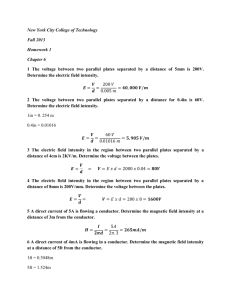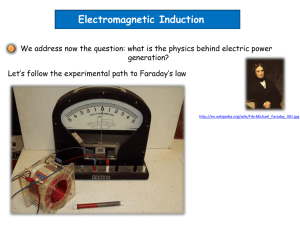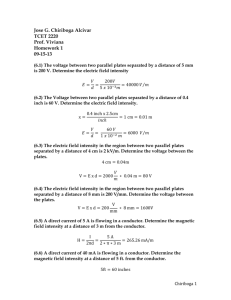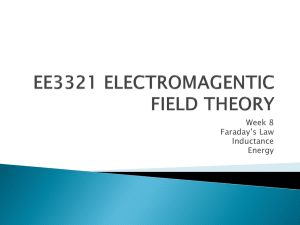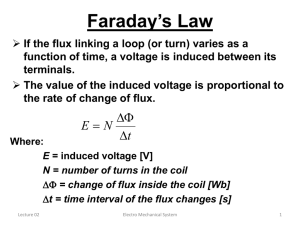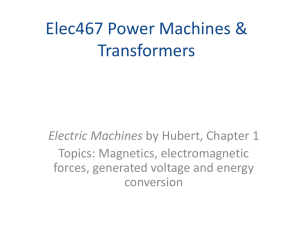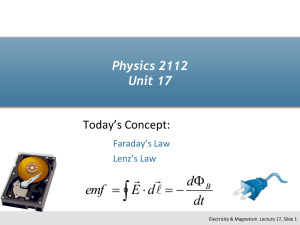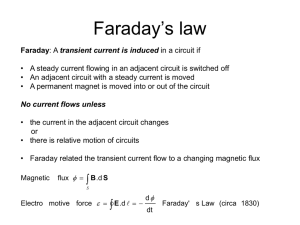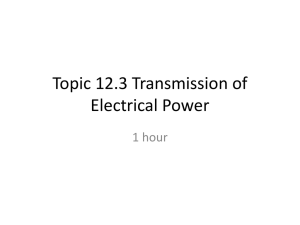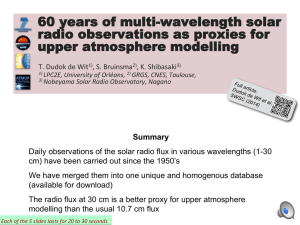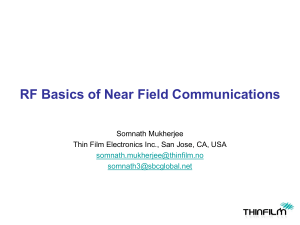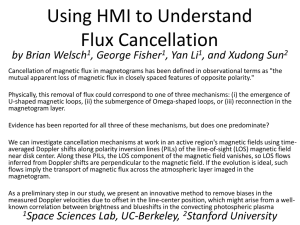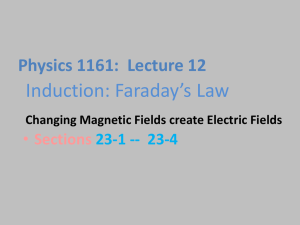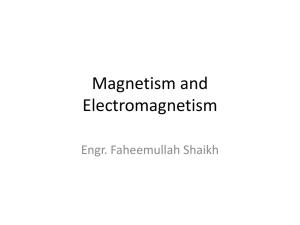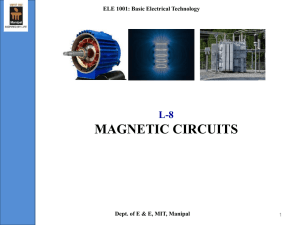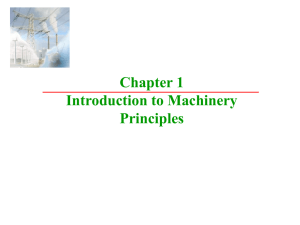Topic 12.1 Induced electromotive force (emf)
advertisement
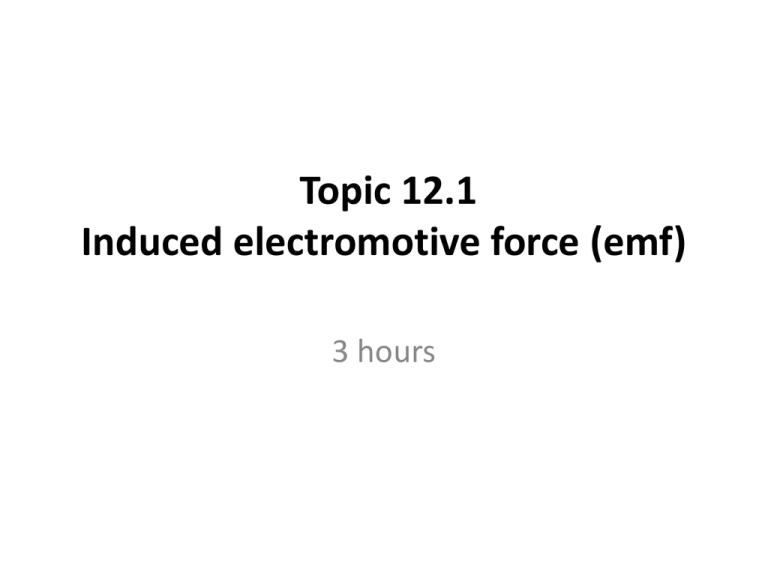
Topic 12.1 Induced electromotive force (emf) 3 hours Electromagnetic Induction • Electromagnetic induction is the production of electric current across a conductor moving through a magnetic field. It underlies the operation of generators, transformers, induction motors, electric motors, synchronous motors, and solenoids. • Michael Faraday is generally credited with the discovery of induction in 1831 though it may have been anticipated by the work of Francesco Zantedeschi in 1829. Around the same time Joseph Henry made a similar discovery, but did not publish his findings until later. Induced Current and emf • Consider a wire of length l that is moved with velocity v in a region of magnetic field B. • When the wire conductor moves in the magnetic field, the free electrons experience a force because they are caused to move with velocity v as the conductor moves in the field. F=evB • This force causes the electrons to drift from one end of the conductor to the other, and one end builds-up an excess of electrons and the other a deficiency of electrons. This means that there is a potential difference or emf between the ends. • Eventually, the emf becomes large enough to balance the magnetic force and thus stop electrons from moving. e v B = e E ⇔E = B v • If the potential difference (emf) between the ends of the conductor is ε then ε=El • By substitution, we have, ε=Bvl • If the conducting wire was a tightly wound coil of N turns of wire the equation becomes: ε=NBvl (Students should be able to derive the expression induced emf = Blv without using Faraday’s law.) Magnetic Flux • Consider a small planar coil of a conductor for simplicity as shown (it could be any small shape). • Now imagine it is cut by magnetic lines of flux. It would be reasonable to deduce that the number of lines per unit cross-sectional area is equal to the magnitude of the magnetic flux density B × the cross-sectional area A. This product is the magnetic flux F. Magnetic Flux • The magnetic flux Φ through a small plane surface is the product of the flux density normal to the surface and the area of the surface. F=BA • The unit of magnetic flux is the weber Wb. Rearranging this equation it can be seen that: B = F / A which helps us understand why B can be called the flux density. So the unit for flux density can be the tesla T, or the weber per square metre Wb m-2. So, 1T = 1 Wb m-2 • If the normal, shown by the dotted line in the figure, to the area makes an angle θ with B, then the magnetic flux is given by: F = B A cosq • where A is the area of the region and q is the angle of movement between the magnetic field and a line drawn perpendicular to the area swept out. (Be careful that you choose the correct vector component and angle because questions on past IB examinations give the correct answers of BA sin q or BA cos q depending on components supplied in the diagrams). • If F is the flux density through a cross-sectional area of a conductor with N coils, the total flux density will be given by: F = N B A cosq • This is called flux linkage. • So it should now be obvious that we can increase the magnetic flux by: • Increasing the conductor area • Increasing the magnetic flux density B • Keeping the flux density normal to the surface of the conductor Changing Flux • The figure below shows the shaded area of the magnetic flux density swept out in one second by a conductor of length l moving from the top to the bottom of the figure through a distance d. • We have already derived that ε = B l v • The area swept out in a given time is given by (l × d) / t. • But v = d / t. So that the area swept out per unit time is given by A/Dt = lv. That is, where A is the area in m2. • For a single conductor in the magnetic flux density, it can be seen that: • where the constant equals –1. The negative sign indicates that direction of the induced emf is such that the current it causes to flow opposes the change producing it. Faraday’s Law and Lenz’s Law • If there are N number of coils, then: • Faraday’s Law can therefore be stated as: The magnitude of the induced emf in a circuit is directly proportional to rate of change of magnetic flux or fluxlinkage. • Lenz’s Law gives us the minus sign and can be stated as: The direction of the induced emf is such that the current it causes to flow opposes the change producing it. Lenz’s Law applied to a solenoid. Lenz’s Law Applied to a straight conductor.
